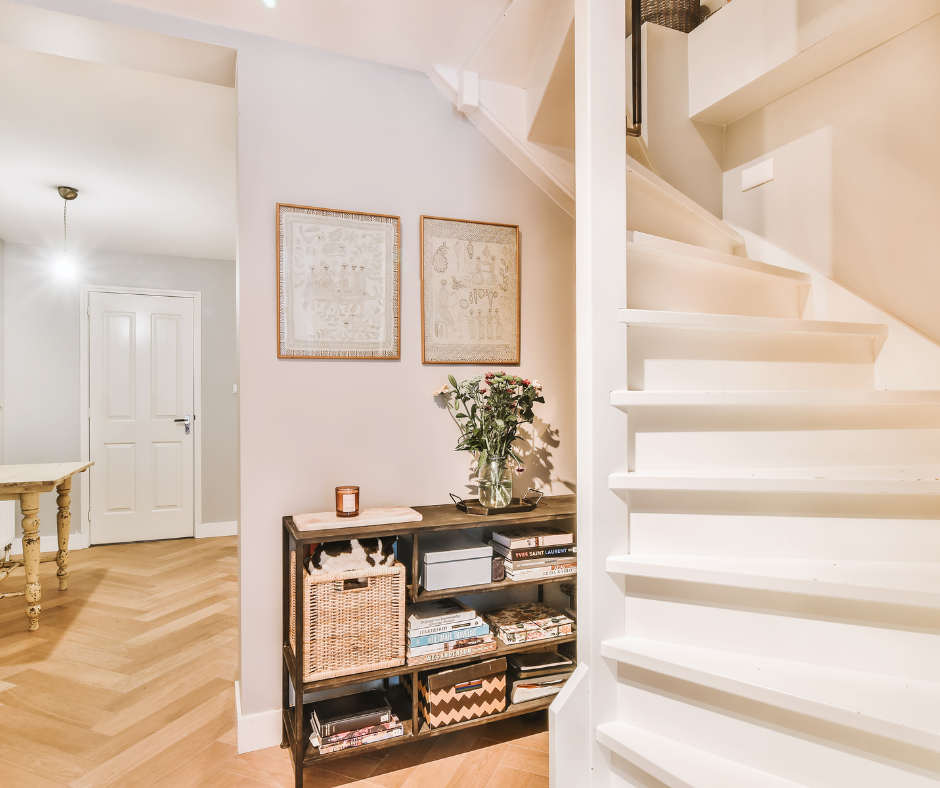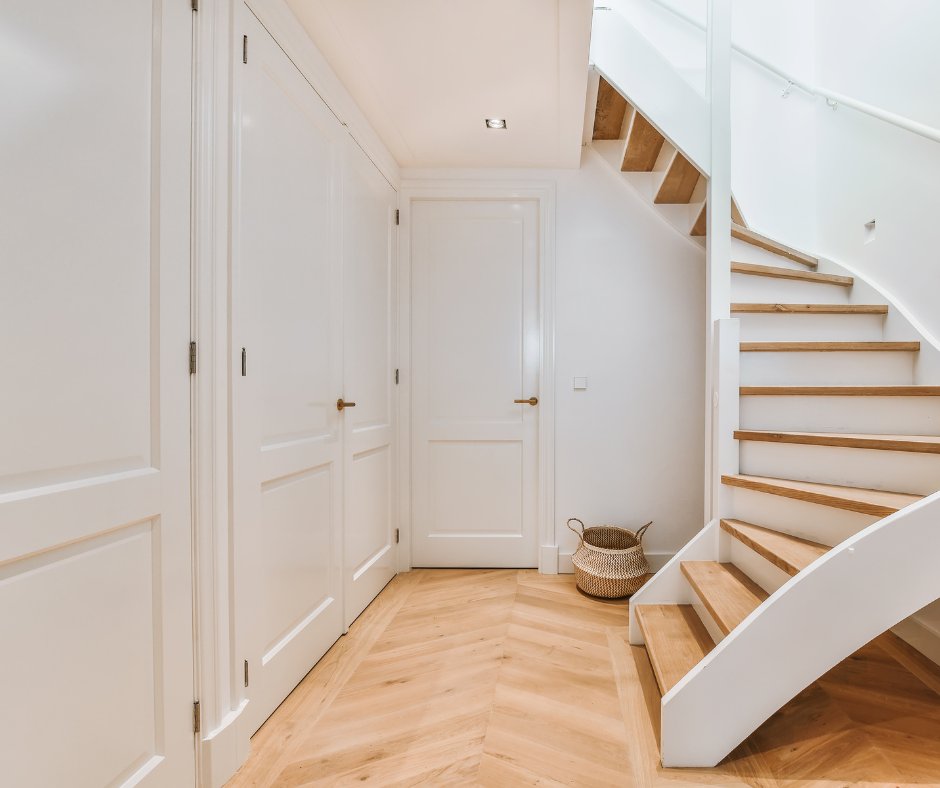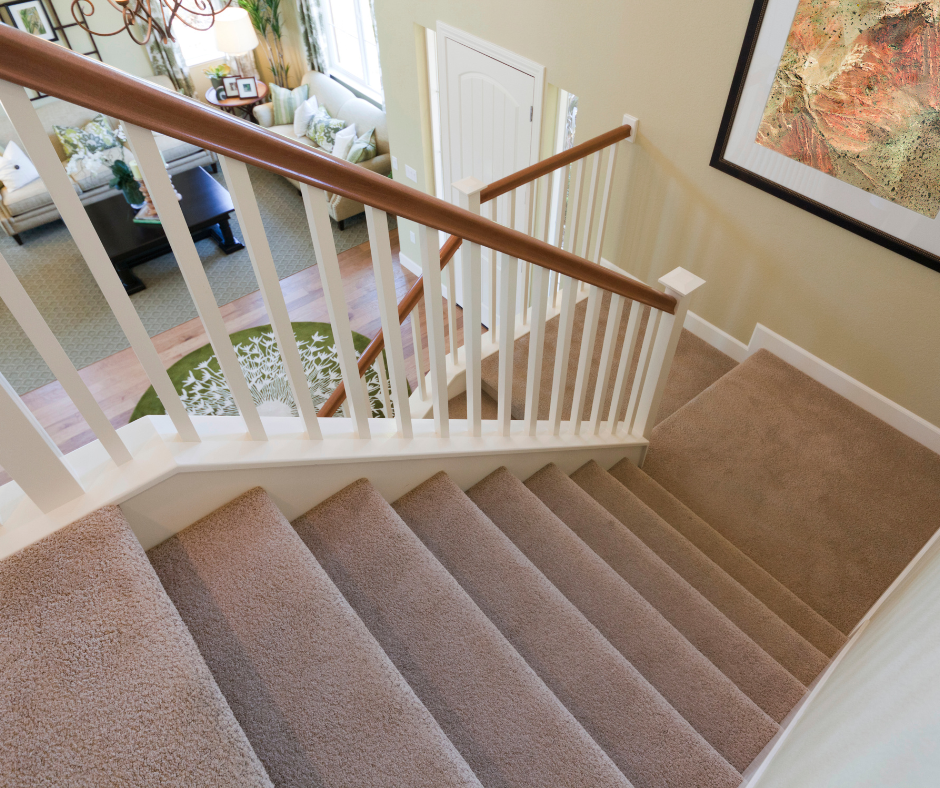When it comes to staircase design, a standard stair tread overhang is an important detail that combines both style and function.
These overhangs, where each tread extends slightly beyond the riser below, enhance safety and provide extra comfort with every step.
Typically measuring between ¾ inch and 1 ¼ inches, this small extension provides essential foot space, making it easier to ascend and descend stairs.
Combined with a carpet stair landing, a well-proportioned stair tread overhang can help make any staircase a comfortable, attractive part of the home.
Why is the Standard Stair Tread Overhang Important?
The overhang on stair treads adds a layer of safety and convenience that goes beyond its aesthetic appeal.
This extra bit of tread at the front edge of each step provides additional room for secure foot placement, reducing the risk of trips or falls.
Overhangs also visually highlight each step, which makes descending stairs easier and safer, especially for children and seniors.
Following the recommended standard stair tread overhang range helps ensure each step has ample support while maintaining a balanced, attractive look.
How Much Overhang on Stair Treads is Needed?
The recommended amount for stair tread overhang typically falls between ¾ inch and 1 ¼ inches, according to the International Residential Code (IRC).
This overhang range offers enough surface space for foot placement without overcrowding the tread depth.
When stair treads are deeper than 11 inches, the IRC does not require an overhang, but for shallower treads, maintaining a standard overhang helps keep stairs comfortable and code-compliant.
Understanding Code Requirements for Stair Tread Overhang
The IRC sets out specific requirements for tread depth and overhang to make stairs safe and comfortable.
For tread depth, a minimum of 10 inches is required if an overhang is present.
The overhang itself should be between ¾ inch and 1 ¼ inches, providing a stable, supportive space for each step.
For outdoor stairs, such as deck stairs, the building codes often remain similar but may have additional regional adjustments.
What Factors Influence the Right Stair Tread Overhang?
Several factors influence the choice of stair tread overhang:
- Tread Depth: For treads less than 11 inches deep, an overhang is generally recommended to increase available foot space.
- Stair Location: Different environments, such as indoor versus outdoor stairs, may have unique overhang requirements.
- Safety and Aesthetic Needs: The overhang visually defines each step, making it easier to navigate the stairs safely. Rounded edges, also known as bullnose nosing, are common for a smooth, inviting look that matches various home design styles.
- Carpeting: When adding carpet to stair treads, keeping the overhang within the code’s standard range is important. Thick carpet can add height to the tread and should be monitored so the total overhang remains within the ¾ to 1 ¼ inch range for safety and style.
Steps to Success
A well-chosen stair tread overhang can make any staircase both safe and visually appealing.
By following code guidelines and considering factors like tread depth and carpeting, you can create a staircase that’s stylish, comfortable, and welcoming.
With these small adjustments, your staircase can be a functional and beautiful addition to your home, enhancing each step of daily life.




